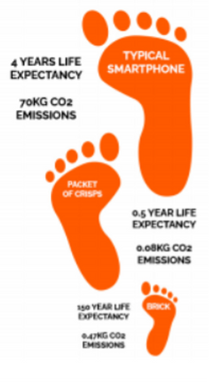2021 was a critical year for construction. Especially infrastructure and residential, but what trends should you watch out for in 2022?
Construction businesses across the UK have started to embrace new digital trends shaking up the whole industry – Modern Methods of Construction (MMC).
According to a study by robotics firm ABB, the construction industry is at a tipping point.
On the one hand, population growth and urbanisation drive the increasing demand for construction.
On the other hand, there's a massive structural labour and skills deficit.
According to ONS data, the UK suffers from an HGV driver shortage and, more expensive, less available imported products exacerbated by delays in ports.
Local suppliers will be your best friends at these times by reducing shipping and storage costs and emissions while building consumer confidence.
Likewise, regulatory issues may become more significant when considering occupational safety and climate change adaptation – Net Zero 2050 will remain a critical front.
Contractors turn to automated technology because of the lack of available labour, increased safety concerns, and quicker turnaround times.
Read on to discover the key construction trends in 2022 that will help you stay competitive on the 4th Industrial Revolution.
1. Digital Twins
Digital twins are digital replicas of a physical entity.
They account for behaviours and processes involved in construction and materials.
Virtual Twins monitor the physical version and work as a testing sandbox to explore the impact of potential changes.


Applications for Digital Twins in the built environment
Digital Twins can automate traditional design, production, and operational processes.
Moreover, the UK government is already investing in Digital Twins.
As part of the Net Zero strategy, the Centre for Digital Built Britain has established along with Cambridge University a National Digital Twin program to enable an environment of data-sharing between businesses.
According to Anne Asensio, vice president of design experience at Dassault Systèmes, this technology trend allows architects and designers to illustrate the entire building life cycle– vital for green projects and circular economy.
Recent examples of architecture using Digital Twins include London’s project Battersea Power Station. The station is one of the world’s largest brick buildings and is notable for its décor.

“Battersea Power Station view from River Thames” by Alberto Pascual/ CC BY 3.0
Digital twins will become an essential planning and designing tool for the constructed environment in 2022.
2. Green architecture, circular economy, and smart buildings
According to the European Commission, smart cities go beyond digital technologies for better material use and fewer emissions.
Likewise, green buildings minimise the building’s impacts on occupants’ health and the environment through enhanced design, construction, operation, maintenance, and removal.
However, the circular economy in the built environment focuses on designing for longevity, service, reuse, and material recovery.
Therefore, smart cities, green architecture, and the circular economy will be key trends in 2022 to attain Net Zero emissions by 2050.
This is important because (for CO2 at least) this is when global warming stops.
Further, the brick will be an instrumental material to build smart cities, thanks to its many qualities, including:
- Over 150 years of durability with none to minimal maintenance.
- Weathers well with time, maintaining value over different periods of occupancy.
- Non-toxicity, non-allergen and non-combustible.
- High thermal mass maintaining room temperature.
- UK brick manufacturers contribute to a net gain in natural capital and biodiversity.
- Brick buildings are easily adaptable.
- Recycling options.

3. Construction robotics
Robotics can make construction safer by lifting greater and heavier loads, accessing risky locations, and tapping into new, safer construction methods.
Moreover, due to the current skill gap experienced in the UK, it is common for practitioners to turn to robotics.
Robotic systems capacity to properly transmit computational design data straight to real-world manufacturing procedures allows for wholly automated bricklaying, fabrication of non-standard brickwork structures, not to mention considerable time savings.
Their usage offers new options for future improvements that are not constrained by the same restrictions as manual assembly procedures, such as specified assembly methods.
Emerging construction robotics automate reclaiming bricks after demolition to recycle them by minimising brick damage and giving them a second life.
Construction robotics are a crucial construction trend for using and collecting brick in 2022.
4. Shifting Standards
Buildings vary widely, and so does their systems, such as fire safety, lighting, HVAC and more.
To construct smarter buildings, we need to find ways to translate complexity into manageable digital models of the built environment.
Several tools and ontologies attempt to tackle this issue.
Unless we want to get mired in proprietary systems and data models that will demand hefty integrations or lock buyers into the established system, digitising buildings will require open standards such as the ontologies:
- Brick schema
- Project Haystack
- Industry foundation classes (IFC)
- Building ontology topology (BOT)
- Smart appliances references (SAREF)
- Google’s Digitalbuildings
- Microsoft’s RealEstateCore
All these initiatives promote the digitalisation of smart building as this gets more complex.
Alternatively, the UK construction innovation hub proposes the Smart Standards - an approach to implementing ISO 19650-2 using tasks in a digital process.
Conclusion
This article discusses key construction trends in 2022 that will help you remain competitive and adapt to the fourth industrial revolution.
We love bricks; they have been around for thousands of years for a reason. And, they will remain a key construction material for the future due to their many benefits strongly aligned with nowadays objectives.
Such as green buildings for the smarter cities of the future or ongoing construction robotic possibilities.
We can help to choose the right brick for you. Request a sample today for your smart building.
Further Reading
What Role Does Brickwork Play in Net Zero 2050?